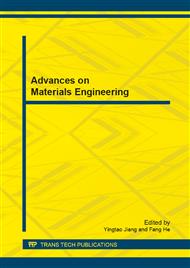p.3
p.8
p.12
p.17
p.22
p.28
p.33
p.38
Finite Element Analysis of Stiffness of Steel Plate with a Rectangular Cutout Bonded by Composite Patches
Abstract:
An ANSYS-based "volume-spring-plate" three-dimensional finite element model is established in this paper to analyze steel plate with a rectangular hole reinforced by double-side bonding patch, in which the plate is simulated by solid45 8-node 3D element, the adhesive layer is simulated by linear elastic spring element combin14, and the patch is simulated by shell element. Relative intensity, relative stiffness and yield load rising rate of a patched steel plate with regard to parameters, such as the patch length, width, the number of patch layer and ply orientation are studied. The results indicate that composite bonded repair can effectively restore the mechanical properties of the structure and improve the service life.
Info:
Periodical:
Pages:
3-7
Citation:
Online since:
August 2013
Authors:
Keywords:
Price:
Сopyright:
© 2013 Trans Tech Publications Ltd. All Rights Reserved
Share:
Citation:


